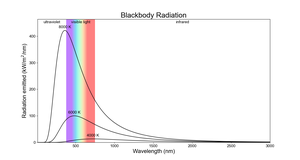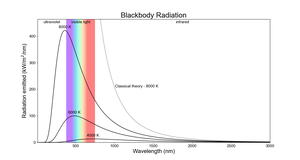Glossary term: Blackbody Radiation
Description: Blackbody radiation is electromagnetic radiation from an idealized object (blackbody) that absorbs all radiation that falls on it and re-emits it at a rate that maintains a state of thermal equilibrium. The spectrum of blackbody radiation is completely specified by the body's temperature according to known laws. Most stars emit light similar to that of a blackbody at a temperature of several thousand kelvins. To be contrasted with synchrotron radiation and other forms of "non-thermal" radiation.
See this term in other languagesTerm and definition status: This term and its definition have been approved by a research astronomer and a teacher
The OAE Multilingual Glossary is a project of the IAU Office of Astronomy for Education (OAE) in collaboration with the IAU Office of Astronomy Outreach (OAO). The terms and definitions were chosen, written and reviewed by a collective effort from the OAE, the OAE Centers and Nodes, the OAE National Astronomy Education Coordinators (NAECs) and other volunteers. You can find a full list of credits here. All glossary terms and their definitions are released under a Creative Commons CC BY-4.0 license and should be credited to "IAU OAE".
Related Diagrams
Blackbody Radiation
Credit: IAU OAE/Niall Deacon
License: CC-BY-4.0 Creative Commons Attribution 4.0 International (CC BY 4.0) icons
Blackbody Radiation - UV Catastrophe
Credit: IAU OAE/Niall Deacon
License: CC-BY-4.0 Creative Commons Attribution 4.0 International (CC BY 4.0) icons










